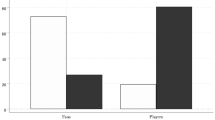Abstract
“A lot of military battle plans going back to the Civil War say ‘whoever controls the Mississippi controls America.’ And Bush is marching straight up the Mississippi,” the Democratic strategist said. “We’ve just retreated from Louisiana, Arkansas and Missouri. They already control Mississippi, Tennessee and Kentucky. Bush is now moving in on Iowa and Wisconsin. And except for Illinois, which isn’t in play, there’s only one state left: Minnesota, the mouth of the river. And it’s dead even [i.e., a tie] there.” From CNN.com, ALLPOLITICS, September 23, 2004: Mercurio, John and Molly Levinson. “CNN Survey: Bush widens lead in Electoral College.” CNN Political Unit. 27 Sept. 2004 <http://www.cnn.com/2004/ALLPOLITICS/ 09/23/electoral.map>
“All total, 21 states are in play. Some will bounce between “lean [toward a candidate]” to “tossup” throughout the campaign.” USA Today, July 25, 2004: “AP: Bush leads Kerry in electoral votes.” A.P. 25 July 2004, <whttp://www.usatoday.com/news/Politicselections/nation/President/2004-07-25-bush-kerry-electoral-votes_x.htm>
Similar content being viewed by others
References
Aldrich, J. H. (1995). Why parties? The origin and transformation of political parties in America. Chicago: University of Chicago Press.
Althaus, S. L., Nardulli, P. F., & Shaw, D. R. (2002). Candidate appearances in {presidential elections}, 1972–2000. Political Communication, 19, 49–72.
Bartels, L. M. (1985). Resource allocation in a presidential campaign. The Journal of Politics, 47, 928–936.
Borel, E., & Ville, J. (1938). Application de la théorie des probabilités aux jeux de hasard,original edition by Gauthier-Villars, Paris, 1938; reprinted at the end of Théorie mathématique du bridgéa la portée de tous, by E. Borel & A. Chéron, Editions Jacques Gabay, Paris, 1991.
Brams, S. J., & Davis, M. D. (1974). The 3/2’s rule in presidential campaigning. American Political Science Review, 68, 155–156.
Brams, S. J., & Davis, M. D. (1975). Comment on campaign resource allocations under the Electoral College. American Political Science Review, 69, 155–156.
Colantoni, C.S., Levesque, T. J., & Ordeshook, P. C. (1975a). Campaign resource allocations under the Electoral College. American Political Science Review, 69, 141–154.
Colantoni, C. S., Levesque, T. J., & Ordeshook, P. C. (1975b). Rejoinder to ‘Comment’ by S. J. Brams and M. D. Davis. American Political Science Review, 69, 157–161.
Crain, W., Messenheimer, H., & Tollison, R. (1993). The probability of being president. The Review of Economics and Statistics, 75, 683–689.
Fair, R. C. (1978). The effect of economic events on votes for president. The Review of Economics and Statistics, 60, 159–173.
Fair, R. C. (2004). A vote equation and the 2004 election. Website: http://fairmodel.econ. yale.edu/
Grofman, B., & Scott, F., (2005). The Electoral College and the 2004 election. Public Choice (forthcoming).
Gross, O., & Wagner, R. (1950). A continuous Colonel Blotto game. RM-408, Rand Corporation, Santa Monica.
Hinich, M., Ordeshook, P., & Michelson, R. (1975). The Electoral College vs. a direct vote: policy bias, indeterminate outcomes and reversals. Journal of Mathematical Sociology, 4, 3–35.
Holcomb, R. L. (2003). Electoral college, in C. K. Rowley & F. Schneider (eds.), Encyclopedia of Public Choice. Boston: Kluwer.
Iyengar, S., & Simon, A. F. (2000). New perspectives and evidence on political communication and campaign effects. Annual Review of Psychology, 51, 149–169.
Jamieson, K. H. (1996). Packaging the Presidency: A History and Criticism of Presidential Campaign Advertising. 3rd Edition. New York, NY: Oxford University Press.
Merolla, J., Munger, M. C., & Tofias, M. (2003). Lotto, Blotto or Frontrunner: An analysis of spending patterns by the national party committees in the 2000 presidential election. Paper presented at the 2003 Annual Meeting of the Midwest Political Science Association, Chicago, Illinois, April 3–6th, 2003.
Merolla, J., Munger, M. C., & Tofias, M. (2005). Lotto, Blotto or Frontrunner: U.S. presidential elections and the nature of ‘Mistakes’. Prepared for delivery at the 2005 Annual Public Choice Society Meeting. An earlier version of this paper was presented at the Micro Incentive Research Center’s Conference on the Micro-Foundations of Federal Institutional Stability, Duke University, May 1st, 2004.
Myerson, R. (1993). Incentives to cultivate favored minorities under alternative electoral systems. American Political Science Review, 87, 856–869.
Rabinowitz, G., & MacDonald, S. E. (1986). The power of the states in U.S. presidential elections. American Political Science Review, 80, 65–87.
Reeves, A., Chen, L., & Nagano, T. (2004). A reassessment of ‘The methods behind the madness: Presidential electoral strategies, 1988–1996.’ Journal of Politics, 66, 616–620.
Shaw, D. R. (1999). The methods behind the madness: Presidential Electoral College strategies, 1988–1996. Journal of Politics, 61: 893–913.
Soumbatiants, S., Chappell, H., & Johnson, E. (2003). Using state polls to forecast U.S. presidential election outcomes. Manuscript, Lincoln Memorial University.
Author information
Authors and Affiliations
Corresponding author
Additional information
Previous work on earlier presidential elections that greatly informed this work benefited from presentation at the annual meetings of the Midwest Political Science Association, 2003, and at a seminar at Duke University’s MIRC. Special thanks to Brendan Nyhan for his superb research assistance and advice. The authors also acknowledge the helpful comments of John Aldrich, Jorge Bravo, Alexandra Cooper, Scott de Marchi, Seth Jolly, and Tom Nechyba. We also thank Charles Rowley, editor of Public Choice, for suggesting the paper. All errors, however, are our responsibility.
Rights and permissions
About this article
Cite this article
Merolla, J., Munger, M. & Tofias, M. In Play: A Commentary on Strategies in the 2004 U.S. Presidential Election. Public Choice 123, 19–37 (2005). https://doi.org/10.1007/s11127-005-3209-x
Issue Date:
DOI: https://doi.org/10.1007/s11127-005-3209-x




